
Your brain is your most precious asset.
It goes without saying that your brain is the reason you can speak, learn, and think.
With this in mind, your brain is worth protecting from anything that may cause it harm.
There is a growing body of evidence that shows COVID can cause cognitive impairment, even in ‘mild’ cases.
In this blog, I want to share with you some important information and science-based tools that you can use to protect yourself from this novel virus as well as other viruses.
Whilst I’m not a medical doctor, I have a research background. I’m able to access and stay up to date with the latest scientific studies.
I’ve found following the latest research has helped me to move from feeling overwhelmed by the pandemic to empowered. It’s my hope the information in this article will help you feel empowered too.
What COVID does to the brain
If you care about learning and cognition, it’s important to understand how COVID can impact the brain.
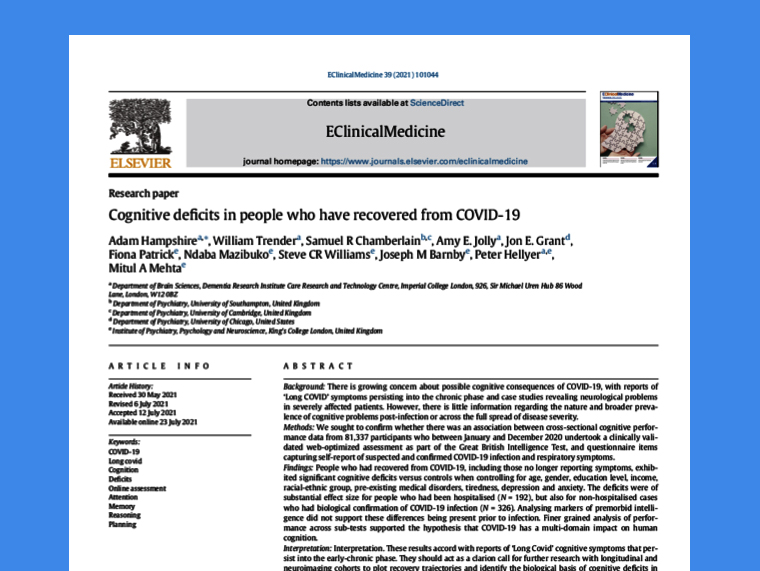
A study published in the Lancet Medical Journal found people who had recovered from COVID experienced cognitive impairments in a range of areas. These areas included executive function (e.g., planning and problem solving), focused attention, memory, and language functions.
The researchers pointed out that these cognitive impairments were found in people who had remained at home with just mild symptoms and did not need to be hospitalised.
Other studies have found being reinfected with COVID increases your risk of getting long COVID. Long COVID can leave you with a cluster of health problems such as brain fog, fatigue, anxiety, depression, chest pain, and loss of taste and smell.
As one long COVID sufferer said:
“You can lose your quality of life and everything that makes you “you” faster than you dreamed possible.”
COVID is an airborne virus
When COVID first came on the scene back in 2020, public health campaigns focused primarily on encouraging people to wash their hands and socially distance.
But since then, we’ve learnt a lot more about how this virus works. We now know that COVID is an airborne virus. It travels like cigarette smoke and the virus particles can remain in the air for hours.
It can be hard to imagine how a person’s breath (potentially containing virus particles) occupies an indoor space. This is why a group of Aerosol research scientists started an art project called #WeAddAerosols. They created a number of images to help people visualise shared breath in an indoor space (see example below from Dr Amy Tan’s Twitter feed).

We also now know that vaccinations are not enough on their own. As Professor Quentin Grafton and a team of health experts stated in their excellent submission to the long COVID inquiry in Australia:
“Data show that being fully vaccinated with three (or more) doses in the recent past provides ~90% protection against severe COVID infection, hospitalisation, and death. Data also show from large studies that vaccine protection against long COVID syndrome is substantially lower and much more variable, between 15-66%”
This is why it’s really important to adopt a number of protective measures, especially if your government has weakened public health measures.
What can you do to protect yourself from COVID?
A really simple thing you can do is keep an eye on indoor carbon dioxide (CO2) levels.
CO2 is a proxy for indoor air quality.
Dr David Berger at CO2 Radical explains it like this:
“We all breathe in oxygen and breathe out CO2, which means CO2 level in an indoor space increases over time, depending how many people there are in the room and how well it is ventilated.
That means the CO2 level in an indoor space gives an idea of how fresh or stale the air is. If the CO2 level is too high, it means the air is stale and the space needs more ventilation. The more stale the air is, the greater the number of germs, such as coronaviruses, in each breath you take, so the more likely you are to get infected.”
Monitoring CO2 can alert you to COVID risks indoors but it can also prevent sleepiness and poor concentration.
If you’ve ever found yourself falling asleep or struggling to concentrate in a class, meeting, or on long car drive, this may have been due to excessively high CO2 levels.
One study looked at the impact CO2 had on office workers’ cognitive function. The researchers created a simulated office environment and changed the CO2 levels in the office space. They then made the office workers perform various cognitive tasks under the different CO2 conditions.
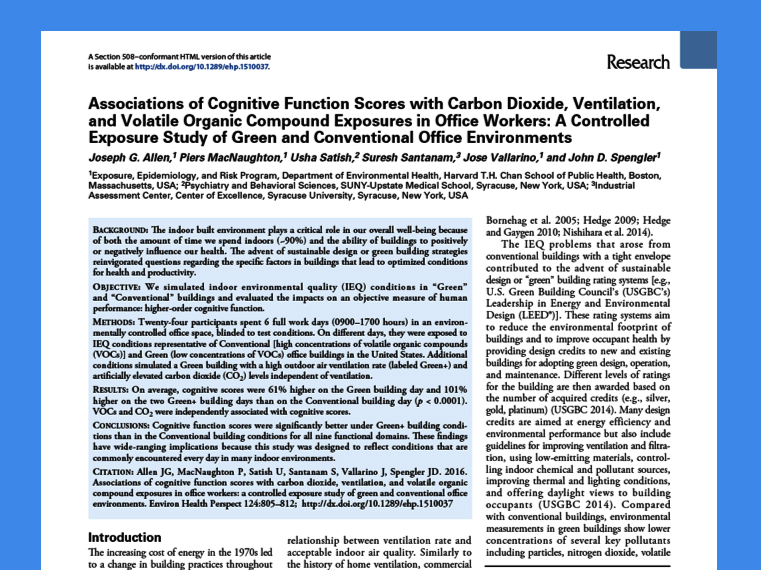
What did they find in this study?
When CO2 levels were higher, people’s cognitive function decreased. But when they opened a window to bring in fresh air (and subsequently, lowered the CO2 level in the office) people’s cognitive function improved.
Some countries already monitor indoor air quality (i.e., CO2 levels). For example, Belgium enforces mandatory CO2 monitors in public places such as restaurants, gyms, and movie theatres. In these venues CO2 levels need to be made visible to the public. Businesses can also receive fines if CO2 is found to be excessively high.
But what if you don’t live in Belgium? What can you do?
You can purchase a CO2 monitor. These nifty, portable little devices will measure CO2 concentrations for you.
Seeing is believing. The numbers will alert you to potentially dangerous situations. You can then decide to either open a window and/or doors or leave the building.
What’s a safe CO2 level? And what’s not?
The chart below will help you make sense of the numbers.
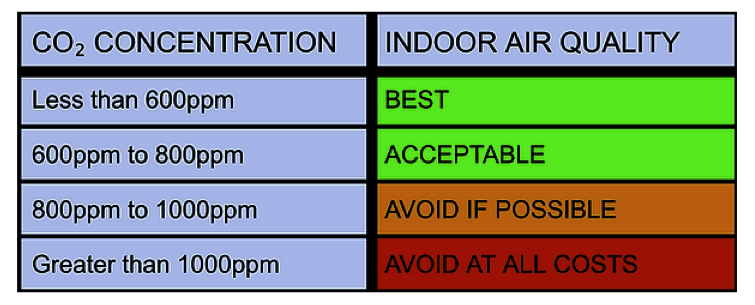
If the reading is below 700ppm, this means the room has less than 1% of people’s air. At 500ppm, you are down to only 0.2% of people’s air.
But when CO2 gets to 3000ppm or higher (which has been found in some classrooms), 9-10% of each breath you take was recently exhaled by someone else. As Dr Berger states:
“It’s like drinking water that’s just been swirled round someone else’s mouth.”
What CO2 monitor should you buy?
There are different CO2 monitors on the market that vary in price and quality.
First up, there is the Aranet4.
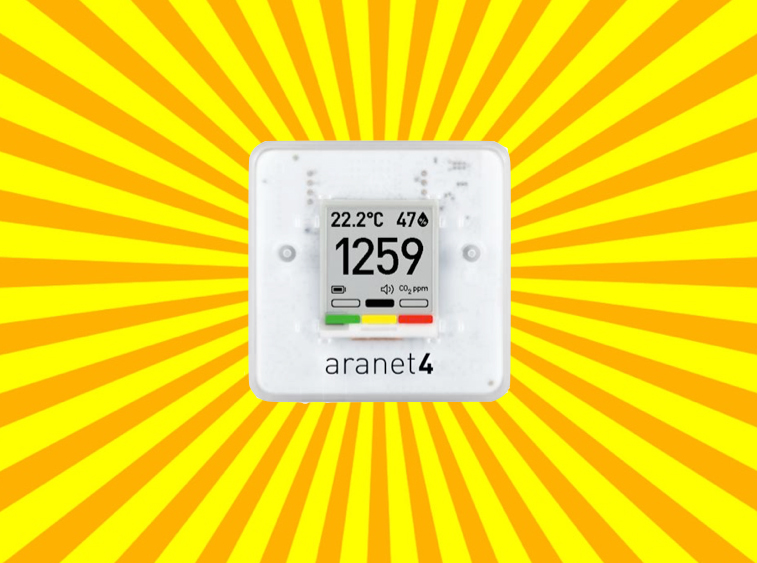
This is considered the gold standard as far as CO2 monitors go. The Aranet comes with an app that allows you to program the device to beep and alert you if CO2 goes above 1400ppm. But this device is not cheap (I paid $380AUD for mine).
How could I justify spending this kind of money?
It was easy. I figured this device could stop me from getting really sick. And if I get sick, I can’t work or do any of the things I really enjoy. It was a no-brainer.
Before you race off and buy an Aranet, there is a much cheaper option I only just recently discovered: The mini carbon dioxide monitor supplied by Theatre Caps.
This CO2 monitor retails for just $80AUD (that’s a whopping saving of $300AUD).

This device reminds me of a Tamagotchi (i.e., a digital pet). It’s small, portable, and can be attached to your keys.
What else can you do to protect yourself from COVID?
Mask up.
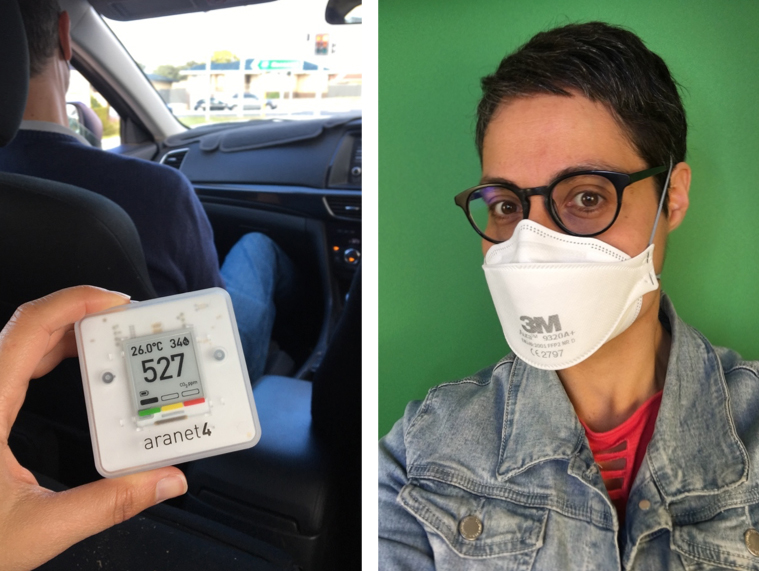
Wearing a mask is one of the most effective ways to avoid getting COVID and long COVID.
Personally, I love wearing a mask when I go out. Not only does it provide an extra layer of protection but it makes me feel like a scientist.
Some masks are better than others. I use a well fitted KN95 mask (3M Aura 9320A+). According to research, these offer the best protection due to their tight seal. I’ve been told by doctors I can use these masks multiple times until the seal becomes loose or the bands snap.
Unfortunately, cloth masks don’t cut it. I realise this isn’t good news for the environment. But in order to be able to protect the environment, you need to protect yourself first.
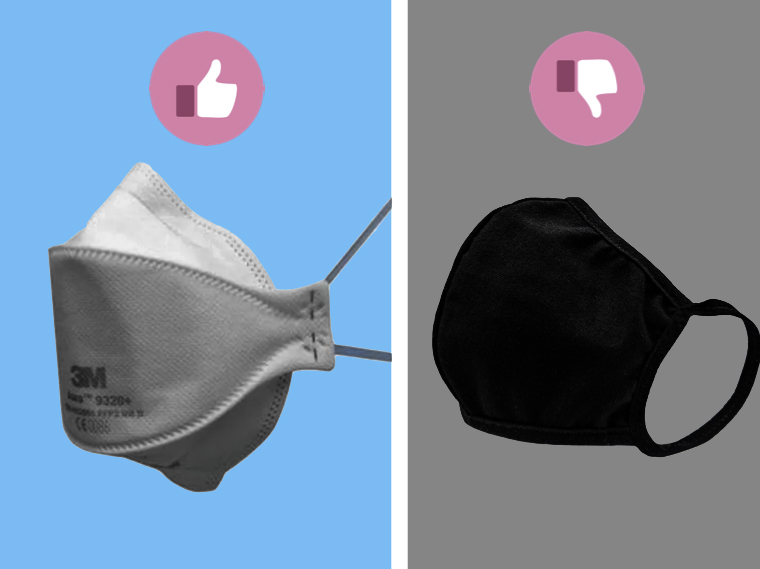
Another thing you can do is organise social gatherings outdoors. As I write this, my husband is catching up with two of his friends outside on our back verandah.
If you’re going to socialise indoors, here are a few things to consider:
• Use a HEPA air filter
• Limit the duration of the gathering
• Limit the number of people at your gathering (the bigger the crowd, the greater the risk)
• Wear KN95 masks
• Open windows and doors for increased air flow
To sum up
This idea of ‘living with COVID’ shouldn’t mean ignoring it. It should mean adopting protective measures to avoid infection and reinfection.
The science is clear: there are a number of simple and effective things you can do to protect yourself. Why not become a citizen scientist by investing in your own CO2 monitor and a well fitted KN95? It will be money well spent.
Image Credit: “Tamagotchi” by LonelyBob is licensed under CC BY-NC-SA 2.0.
